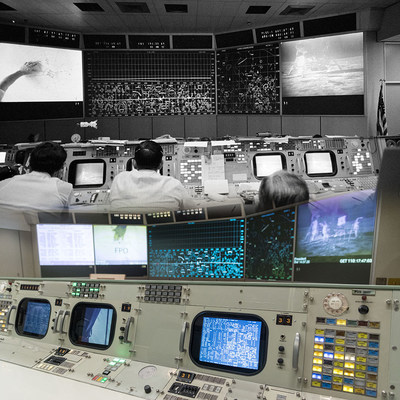NASA Invites Media to Opening of Newly-Restored Apollo Mission Control Center
PR Newswire
WASHINGTON, June 20, 2019
WASHINGTON, June 20, 2019 /PRNewswire/ — Fifty years ago, an unparalleled team of experts in a mission control center at NASA’s Johnson Space Center in Houston landed the first humans on the Moon. Media are invited to join NASA Administrator Jim Bridenstine for the reopening of this historic and newly-restored facility at 9 a.m. CDT Friday, June 28.

To commemorate an accomplishment that forever changed the world, the Apollo Mission Control Center has been restored to appear as it did in that era just in time to celebrate the 50th anniversary of the Apollo 11 Moon landing.
The event will begin in the Teague Auditorium at Johnson with speakers from NASA and Space Center Houston, Johnson’s official visitors center, followed by a ribbon-cutting ceremony. Media will have opportunities to interview NASA officials, Space Center Houston leaders, restoration and preservation experts, and Apollo alumni following the event.
U.S. reporters wishing to attend the event and/or reserve an interview opportunity must contact Johnson’s newsroom at 281-483-5111 by 5 p.m. Wednesday, June 26.
The program for the event is as follows:
9 to 9:45 a.m. – Opening remarks in Teague Auditorium
- NASA Administrator Jim Bridenstine
- Johnson Center Director Mark Geyer
- Space Center Houston President and CEO William Harris
- Apollo alumni
10:15 to 10:30 a.m. – Ribbon-cutting ceremony in the Apollo Mission Control Center and first media opportunity to view the Apollo Mission Control Center from visitor viewing room.
10:30 a.m. to noon – Second media opportunity to view Apollo Mission Control Center from the visitor viewing room.
Find more information on the restoration project at:
https://www.nasa.gov/feature/the-historic-apollo-mission-control-center-will-be-restored

![]() View original content to download multimedia:http://www.prnewswire.com/news-releases/nasa-invites-media-to-opening-of-newly-restored-apollo-mission-control-center-300872450.html
View original content to download multimedia:http://www.prnewswire.com/news-releases/nasa-invites-media-to-opening-of-newly-restored-apollo-mission-control-center-300872450.html
SOURCE NASA
